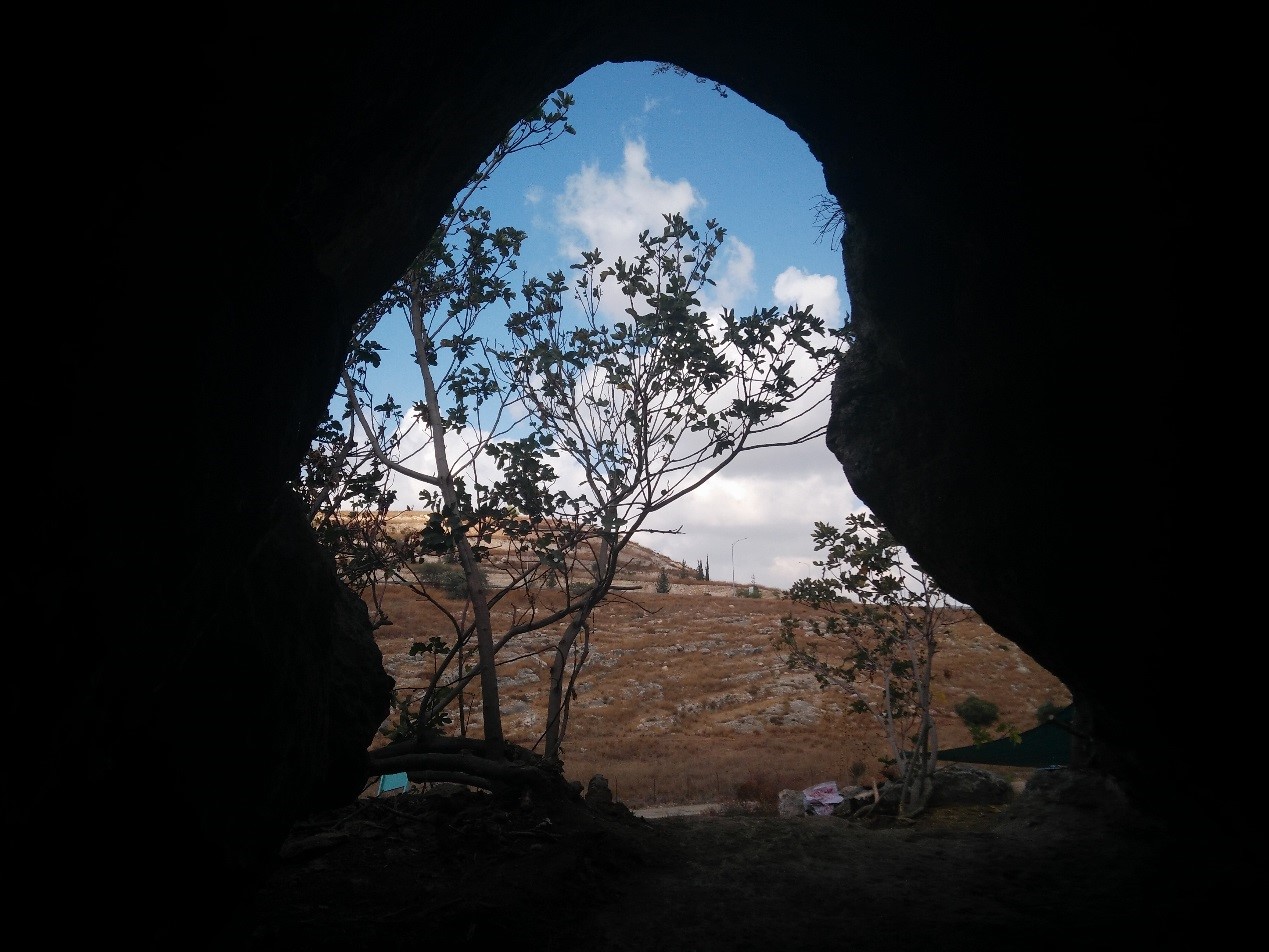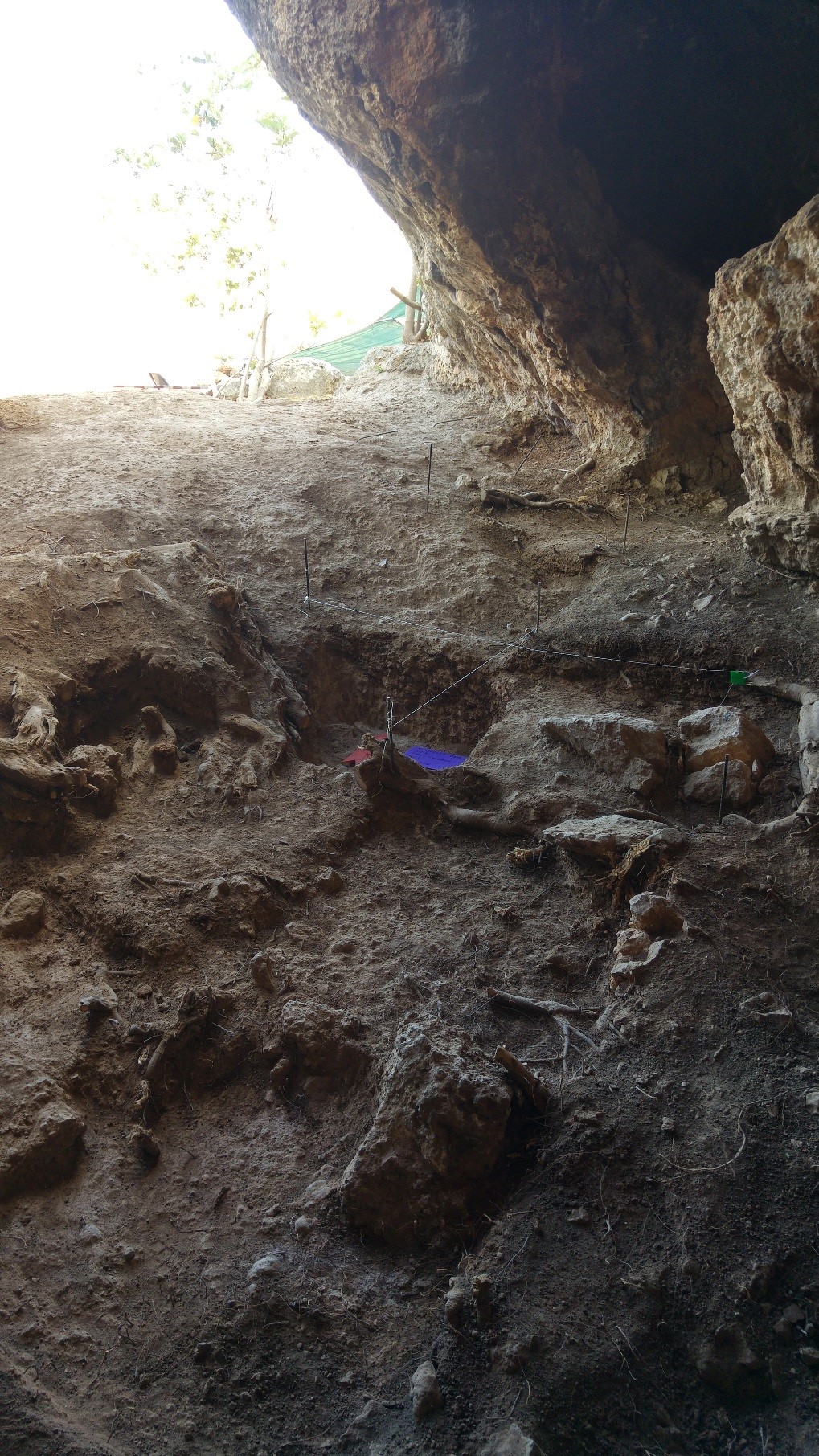Tinshemet Cave
In collaboration with Yossi Zaidner1,2, Oz Varoner3, Marion Prevost1, Gadi Herzlinger1, Reuven Yershurun2, Kathryn Pocklington2, and Naomi Porat4
1the Hebrew University of Jerusalem, 2University of Haifa, 3Ben-Gurion University, 4Geological Survey of Israel
Tinshemet Cave, also known as Mugharet al-Watwat (Stekelis, 1942), is located in central Israel, near the modern city of Shoham. The cave is located on a moderate slope on the east bank of Nahal Bet-Arif stream, approximately 20 meters above the riverbed.

Tinshemet Cave contains three chambers, the innermost having an open chimney. A preliminary survey of the cave conducted by Stekelis (1942) revealed Mousterian artifacts. In 2016, we conducted pilot excavations aimed at assessing the spatial and vertical extent of the archaeological layers and evaluating the potential of the cave for future large-scale excavations. The pilot excavations at Tinshemet Cave revealed excellent potential for further excavation of the site. The habitation layers were discovered on the terrace of the cave and inside the first chamber. The archaeological material is exposed on area of about 80 square meters. On the terrace, the Middle Paleolithic breccia extends over an area of around 40 square meters. In the deepest square, we reached a depth of 120 cm beneath the surface.

Excavated squares in the first chamber of Tinshemet Cave

